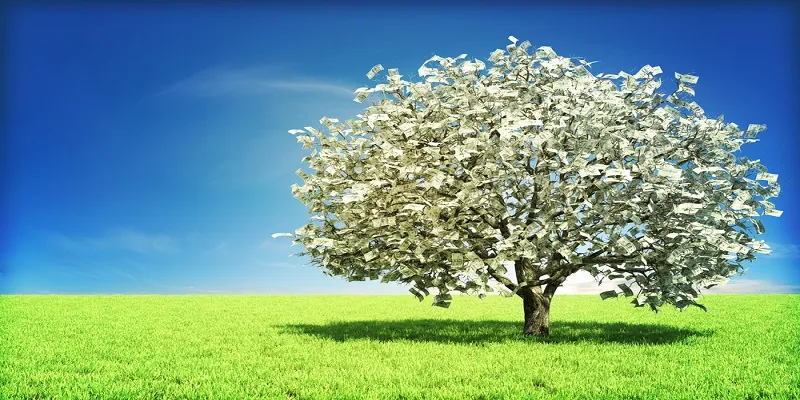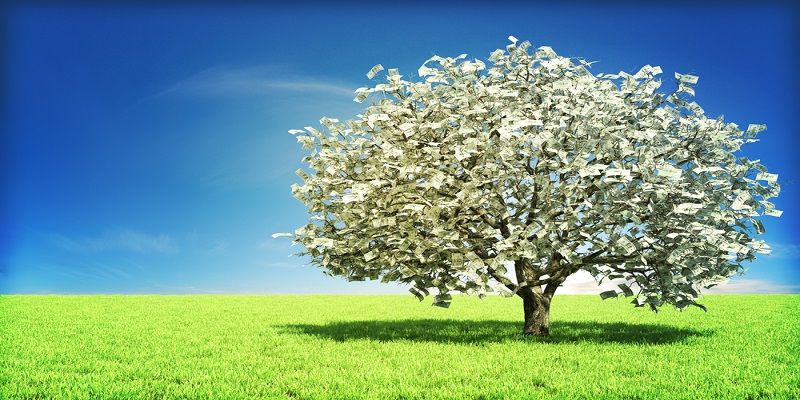For some nature is priceless, for others it means money
The more it becomes obvious that the state of the environment is a cause for concern, the more one hears of buzzwords in business circles. One such that has been gaining currency over the last few years is “natural capital” – one that safely assumes that nature is capital.

To say that the concept has been getting wider acceptance of late does not mean that the concept itself is new. The broader concept is that of ecosystem services(ESS, in parlance of environmental economics), one that talks of benefits people obtain from ecosystems. The term was introduced in the early 1980s with the purpose of explaining human dependence on functioning ecosystems to non-ecologists; but it soon became associated with monetary valuation and “payments-for-ecosystem-services” (commonly referred to as: PES) schemes.
The concept of ESS, coined in the 1980s in the writings of American biologists and ecologists Paul Ehrlich, Anne Ehrlich and Harold Mooney,was a way of demonstrating how biodiversity loss affects ecosystem functions and ultimately human well-being. The debate took a different trajectory in the 1990s, especially after the United Nations Conference on Environment and Development (UNCED), also known as the Rio Summit or Earth Summit. Over 1300 contributors from 95 countries worked on the Millennium Ecosystem Assessment, a major global study on ecosystems carried out through 2001–2005. That was when the concept of ESS entered the domain of public policy making.
The findings were stark:
1. Over the past 50 years, humans have changed ecosystems more rapidly and extensively than in any comparable period of time in human history, largely to meet rapidly growing demands for food, fresh water, timber, fiber and fuel. This has resulted in a substantial and largely irreversible loss in the diversity of life on Earth.
2. The changes that have been made to ecosystems have contributed to substantial net gains in human well-being and economic development, but these gains have been achieved at growing costs in the form of the degradation of many ecosystem services, increased risks of nonlinear changes, and the exacerbation of poverty for some groups of people. These problems, unless addressed, will substantially diminish the benefits that future generations obtain from ecosystems.
3. The degradation of ecosystem services could grow significantly worse during the first half of this century and is a barrier to achieving the Millennium Development Goals.
4. The challenge of reversing the degradation of ecosystem while meeting increasing demands for services can be partially met under some scenarios considered by the MA, but will involve significant changes in policies, institutions and practices that are not currently under way. Many options exist to conserve or enhance specific ecosystem services in ways that reduce negative trade-offs or that provide positive synergies with other ecosystem services.
The assessment done, its fallout could only be a quantification of damage / losses. In response to a proposal by the G8+5 Environment Ministers in Potsdam, Germany in 2007, the European Commission and Germany launched a study called The Economics of Ecosystems and Biodiversity (TEEB) to look into the economics of biodiversity loss. Its second phase (which is still under progress) was hosted by the United Nations Environment Programme (UNEP). Led by a banker from Deutsche Bank, Pavan Sukhdev, the TEEB Interim Report for the first phase was released in May 2008. It focused largely on forests and looked at the extent of losses of natural capital taking place as a result of deforestation and degradation, estimating this to be US$2–4.5 trillion per year, every year.
Since then, a growing tribe of environmental scientists have thrown in their weight with advocating
economic valuation of ecosystem services as a pragmatic short-term strategy to communicate the value of biodiversity in a language that reflects dominant political and economic views
,according to Erik Gómez-Baggethun, currently with the Norwegian Institute for Nature Research (NINA), Oslo. He and his former colleague Manuel Ruiz Pérez argued in a paper ‘Economic valuation and the commodification of ecosystem services’, “One of the many reasons why the debate has veered towards this approach has been the crisis in the traditional conservation approach. In spite of its numerous achievements in terms of protection of rare species and habitats, traditional conservation approaches have been powerless to reverse or stabilize the metabolic patterns of the global economy, characterized by ever-increasing demands on natural capital stocks, ecosystem services, and biodiversity. Although the state of the environment would undoubtedly be worse if conservation strategies had not been in place, traditional conservation has so far failed to reverse biodiversity and habitat loss.”
The two had looked at the commodification of ecosystem services; but their criticism was not directed at the concept itself, but at the contention that economic valuation will solve the problems and short comings of traditional conservation.They found that commodification of ecosystem services takes place though four main stages: economic framing, demonetization, appropriation, and commercialization,although these stages sometimes overlap in time and are not always necessarily concomitant.
That commodification process, however, is not under way anymore: it is more or less complete. It came in the form of the inaugural World Forum on Natural Capital held at Edinburgh in 2013: it went on to define “natural capital” as the world’s stocks of natural assets which include geology, soil, air, water and all living things.Needless to say, the summit was dominated by businesses.
The Leverhulme Centre for the Study of Value, which examined the issue of ‘natural capital’ in a working paper titled ‘The natural capital myth; or will accounting save the world?’, remarked, “The metaphorical concept of natural is being discursively and technically constructed using the expert languages of economics and science in such a way that engenders authority and the appearance of universal truth, despite the basis of these assertions in particularity, conjecture, metaphor and fantasy.
The conclusion of Gómez-Baggethun and Pérez too had been tell-tale:
Concepts like natural capital and ecosystem services set human-nature relations into one of utility and exchange, thereby expanding the economic rationality of the profit calculus into the sphere of ecosystems and biodiversity. Similarly, valuation methods frame choices within a narrative of scarcity, efficiency and profit maximization, often serving as metrical technology for the commodification of ecosystem services. Through the effort it has put into monetary valuation of market-based instruments, the ecosystem service approach has served, often against the will of its promoters. This is the tragedy of well-intentioned valuation.
Irrespective of whether we like to put a price tag on nature or not, it is obvious that the discourse is headed that way. The price will have to be paid by later generations.











![[Funding alert] Health and insurtech startup Loop Health raises $25M in Series B](https://images.yourstory.com/cs/2/f49f80307d7911eaa66f3b309d9a28f5/Featureimages-newdeck27-1650364799673.png)